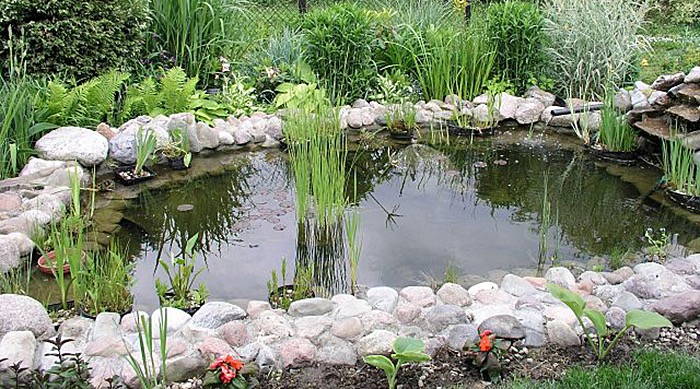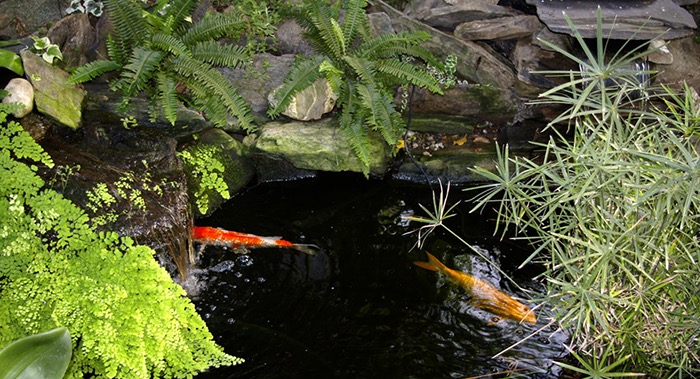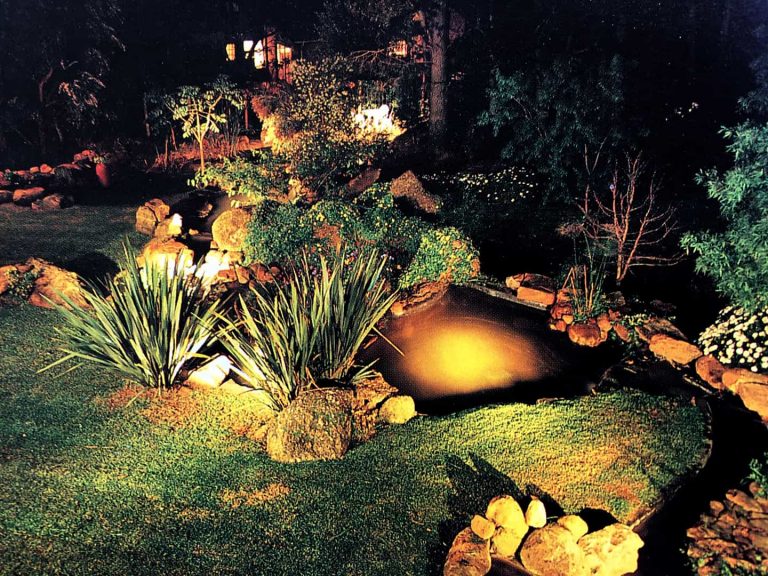Creating Your Own Backyard Pond

Creating & Building Your Own Backyard Pond
Water can improve the look of any yard or garden, and so if you are planning to do some outdoor improvements, why not consider creating your own backyard pond?
There are so many options when it comes to introducing water into the garden, the sky really is the limit. You can choose a pool that reflects the surrounding plants and features, or add movement by installing a fountain feature in the water.
A backyard pond should be located where it can be seen from a patio or deck. Ideally, it should look similar to the surroundings, rather than competing with them. The soil should be slightly elevated around the pond to prevent excess water from draining back into the pond. Avoid putting a pond under trees, if possible. This will cut down on debris, and most aquatic plants thrive in full sunlight.
Once the ideal site is selected, excavation can begin. According to the National Association of Conservation Districts, the pond should be “at least 18 to 24 inches deep; 24 to 36 inches is ideal”; With this depth, a greater variety of fish and plants can thrive in the pond. Tiers or terraces around the inside of the pond at various depths create a place to put pots of different aquatic plants. Allow room for landscaping.
Fish introduce movement, color and life, and they help to create an environment that is able to maintain a good balance with nature. Fish never fail to add a certain magic to ponds and pools.
Source Material Supplies First
Before you decide exactly what type and style of pond you are going to create, you need to be sure you have access to a good source of fish pond supplies. These will include the materials you need to construct or install a pond, as well as fountains and other accessories, pond lights, nets, aquatic plants, pumps, filters and so on. Then you can get on with the planning process.
While the size of your pond may be restricted by the size of your backyard, shape and style are limited only be imagination.
If you have not done any work on your garden yet, then you can have a lot of fun introducing a theme or style that goes with your house. Decide on the effect you want to create, and then work systematically from here. Try to visualize your backyard pond and the garden around it. To do this, it usually pays to spend time outdoors, walking and sitting near to where you want to build your pond or water feature. It also helps to put the plan on paper.
If you already have an established style in the garden as a whole, then it’s usually best to stick with this, irrespective of the exact position of your new pond.
Formal Pond or An Informal Pond
For starters, is it formal or informal?
Formal ponds and formal gardens are characterized by symmetry and a carefully planned balance of features and plants. So if your established style is formal, you will be better off building a pond that is either circular or quite rigidly geometric in shape. Generally these work best on patios (or in courtyards) rather than in the yard itself. If you have a deck, you may like to extend it and incorporate a pond so the level of the water is flush with the decking.
Informal ponds may be any size at all, although this obviously will affect your construction method. Although preformed ponds are the easiest to install, they are usually small. This doesn’t necessarily need to be a disadvantage, particularly if your backyard is on the small side and all you want is a feature where you can keep a few fish. Flexible liners offer the cheapest ponds, and you can adapt them to any shape and virtually any size. You can also incorporate different levels which will enable you to plant marginal plants around the edges where the water is shallow.
If you can’t find inspiration within your own garden, have a look at what other people have done in their backyards. Also look at water as it appears in nature, you might find some excellent ideas.







